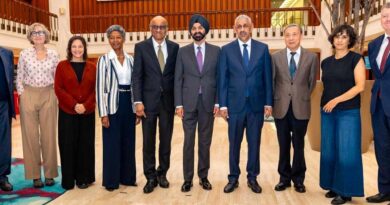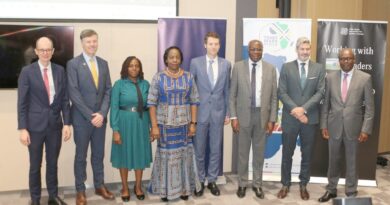Zambia’s Economic Path in 2025: Between Promise and Pressure
Zambia’s economic policy framework in 2025 reveals a country walking a tightrope striving to deliver stability and growth while wrestling with structural vulnerabilities and public expectations.
From fiscal consolidation to energy reform and debt restructuring, the tone is clear: the country is in reset mode.
After years of macroeconomic turbulence, signs of recovery are emerging. Inflation dropped to 14.1% in June 2025, the lowest rate in over a year.
The kwacha has steadied, and confidence from key stakeholders including the IMF and World Bank appears cautiously optimistic.
However, Zambia’s long-term trajectory hinges on one central question: Can policy translate into practice?
Fiscal Policy: Tight Belts and Tough Choices
The government has committed to reducing the fiscal deficit, reining in public spending and boosting revenue collection.
Subsidy reforms particularly in energy and agriculture are a bold but necessary step.
Meanwhile, supplementary budgets remain a key concern, reflecting weaknesses in long-term fiscal planning. These must evolve from being a fiscal reflex to a rarity.
Monetary Policy: Inflation Control Takes Center Stage
The Bank of Zambia continues its tight monetary stance to bring inflation under control and restore price stability.
The cautious use of interest rate adjustments and forex interventions reflects the balancing act between stabilizing the currency and supporting domestic credit growth.
Debt Management: Walking the Restructuring Tightrope
Zambia’s public debt remains high, but the country is actively engaged in restructuring negotiations under the G20 Common Framework.
Success here will determine the country’s fiscal breathing space over the next decade.
The IMF programme is a vital anchor but it is not a substitute for discipline at home.
Sectoral Reforms: Mining, Energy and Agriculture
The mining sector is once again Zambia’s economic engine. With a more predictable tax regime and clearer regulatory signals, the government is betting on copper, cobalt, and emerging green minerals to power growth.
In the energy sector, liberalization is slowly taking hold, with Independent Power Producers (IPPs) entering the grid, and tariffs gradually aligning with market realities.
Agriculture, long underexploited, is receiving renewed attention. Reforms to the Farmer Input Support Programme (FISP) and encouragement of agro-processing signal a move from subsistence to enterprise.
But productivity gaps and climate risks remain significant threats.
Investment Climate: Reforms with Results ?
Zambia is making progress in improving its business environment.
PACRA and ZRA digitization, local content enforcement, and the use of Public-Private Partnerships (PPPs) are reshaping the investment narrative. Still, predictability and enforcement are as important as policy announcements.
The Social Imperative
Beyond macro reforms, the government must not lose sight of human development.
Free education and expanded social cash transfers are important social cushions, especially in a context of rising unemployment and inequality.
However, quality and accountability in service delivery remain areas that demand urgent improvement.
What Next ?
Zambia’s economic future depends not on what is planned, but on what is implemented.
The architecture of reform is now in place but delivering results will require sustained political will, technocratic efficiency, and civic accountability.
If Zambia can stay the course and translate its economic policies into tangible progress, then 2025 may be remembered not just as a recovery year, but the turning point toward long-term transformation.



